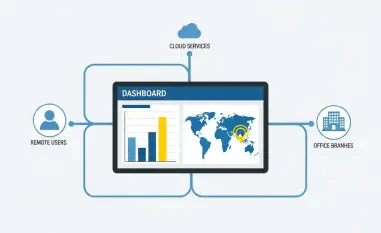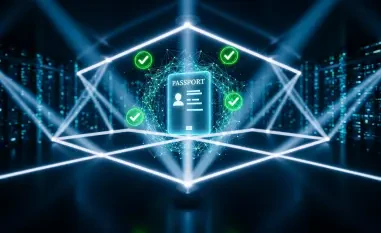Meet Malik Haidar, a seasoned cybersecurity expert with a wealth of experience in safeguarding multinational corporations from digital threats and hackers. With a deep background in analytics, intelligence, and security, Malik has a unique ability to blend business perspectives with cutting-edge cybersecurity strategies. Today, we dive into his insights on protecting industrial control systems (ICS) and operational technology (OT) environments, focusing on the persistent dangers of USB-borne malware and the latest guidance from NIST to combat these risks.
Can you walk us through what led to the creation of NIST’s Special Publication 1334, and why the focus is specifically on USB-related threats in OT environments?
Absolutely. NIST recognized a critical gap in addressing cybersecurity risks tied to removable media, especially USB flash drives, in operational technology settings. These environments, like industrial control systems, are often mission-critical, and a breach can have devastating consequences. USB drives have long been a vector for malware, and despite years of warnings, they remain a persistent threat in OT due to their widespread use. NIST saw the need for targeted guidance to help organizations mitigate these risks with practical, actionable steps, which is why SP 1334 was developed as a focused resource.
Why do USB flash drives continue to pose such a significant risk to industrial control systems, even with ongoing industry warnings?
USB drives are a double-edged sword in OT environments. They’re incredibly convenient for tasks like firmware updates or diagnostics, but that ease of use makes them a prime target for malware. Many industrial systems aren’t designed with the same level of cybersecurity as IT networks, so once a malicious USB is plugged in, it can easily spread infections. Plus, human error plays a big role—people often underestimate the risks or bypass protocols for the sake of speed. The problem persists because the utility of USBs often outweighs the perceived threat in day-to-day operations.
What are some reasons USB drives are so commonly relied upon in OT settings for things like updates or data retrieval?
In OT environments, USB drives are often the go-to tool because many industrial systems are air-gapped or isolated from broader networks for security reasons. This means you can’t just push updates or pull data over the internet—you need a physical medium. USBs are portable, cheap, and universally compatible, making them ideal for transferring firmware updates or diagnostic logs between systems. Unfortunately, this necessity creates a vulnerability that attackers are all too eager to exploit.
How have the types of malware targeting OT systems via USB drives evolved in recent years?
Over the past few years, we’ve seen a shift from generic, commodity malware to more sophisticated, targeted threats aimed at OT systems. Early on, USB malware was often opportunistic—think worms like Conficker that spread indiscriminately. Now, attackers craft malware specifically for industrial environments, designed to disrupt operations or steal proprietary data. Some even mimic legitimate OT processes to evade detection. This evolution reflects a deeper understanding by threat actors of how critical these systems are and the potential impact of a successful attack.
Can you paint a picture of how USB-borne malware might disrupt operations or compromise safety in a real-world industrial setting?
Imagine a manufacturing plant where a technician unknowingly uses an infected USB to update the firmware on a programmable logic controller. The malware spreads, altering the controller’s logic to overheat machinery or ignore safety thresholds. This could lead to equipment failure, production halts, or even physical harm to workers if safety mechanisms are bypassed. The ripple effects might include costly downtime, damaged goods, and regulatory violations. It’s a stark reminder that in OT, cybersecurity isn’t just about data—it’s about protecting lives and infrastructure.
NIST SP 1334 is notably brief at just two pages. What do you think was the reasoning behind keeping it so concise, and how does this benefit organizations?
I believe NIST kept SP 1334 short to make it accessible and actionable for busy professionals in industrial settings. Cybersecurity guides can often be dense and overwhelming, especially for OT staff who may not have deep IT expertise. By boiling it down to two pages, NIST ensures the key points—procedural, physical, and technical controls—are clear and digestible. This brevity helps organizations quickly grasp the essentials and integrate them into their workflows without getting bogged down in technical jargon or lengthy processes.
Why is it so critical for organizations to establish strict policies around purchasing, authorizing, and managing USB devices in OT environments?
Strict policies are vital because they create a controlled framework for USB usage, reducing the chance of rogue or infected devices entering the system. By standardizing purchasing, you ensure devices meet security benchmarks. Authorization limits who can introduce USBs into the environment, cutting down on unauthorized access. And proper management—like tracking usage—helps identify anomalies early. Without these policies, it’s a free-for-all, and that’s a recipe for disaster in high-stakes OT settings.
What does it mean to treat all other USB devices as untrusted, and how can companies practically implement this mindset?
Treating devices as untrusted means assuming any USB not explicitly vetted by your organization could be compromised, even if it comes from a seemingly reliable source. In practice, companies can implement this by enforcing a “whitelist” approach—only allowing pre-approved, company-issued USBs to be used. Any other device should be barred from connecting to systems until it’s thoroughly scanned and cleared. This mindset shifts the default from trust to caution, which is essential for minimizing risks.
How does limiting USB use to specific personnel and purposes help in reducing cybersecurity risks?
Limiting USB use creates accountability and narrows the attack surface. When only designated personnel can use these devices, you reduce the number of potential entry points for malware through human error or malicious intent. Restricting purposes—say, only for firmware updates—prevents casual or unnecessary usage that might introduce threats. It’s about enforcing discipline; fewer hands and fewer reasons to plug in a USB mean fewer opportunities for something to go wrong.
On the physical controls side, how does storing USB devices in secure locations and maintaining an inventory help prevent unauthorized access or misuse?
Physically securing USBs and keeping an inventory acts as a first line of defense against theft or tampering. Storing them in locked areas ensures only authorized personnel can access them, preventing someone from sneaking in a malicious device. An inventory lets you track who has what and when it’s used, so if a device goes missing or is used improperly, you can trace it back. It’s a simple but effective way to maintain control over these small, easily misplaced tools that can cause big problems.
Why is labeling USB devices important, and how does it support day-to-day operations in industrial settings?
Labeling USBs is a practical step that boosts both security and efficiency. It helps identify the purpose, owner, or system a device is tied to, reducing mix-ups or misuse. For example, a label might indicate a USB is only for a specific machine’s updates, so staff know not to use it elsewhere. In day-to-day operations, this clarity speeds up workflows and ensures the right device is used for the right task, while also aiding in audits or incident investigations if something goes awry.
How feasible is it for industrial facilities to implement technical controls like disabling unnecessary ports and scanning devices for malware without disrupting their operations?
It’s quite feasible, though it requires planning. Disabling unnecessary ports can be done during system setup or maintenance windows to avoid downtime, and it’s a one-time task for many systems. Scanning USBs for malware before and after use can be integrated into existing protocols with minimal disruption if you have dedicated tools or kiosks for this purpose. The key is to balance security with workflow—start with pilot programs to test these controls and adjust based on feedback from operators to ensure they don’t slow down critical tasks.
Why is disabling autorun considered a crucial step, and what specific threats does it help prevent?
Disabling autorun is critical because it stops malware from automatically executing the moment a USB is plugged in. Many USB-borne threats rely on autorun to spread—think of malware that launches itself without user interaction, infecting systems silently. By turning off this feature, you force a manual step, giving security tools or personnel a chance to intervene before anything malicious runs. It’s a simple fix that blocks a common infection pathway, especially in OT where systems might not have real-time defenses.
How does encrypting data on USB drives add an extra layer of security, and what challenges might OT environments face in adopting this practice?
Encryption ensures that even if a USB falls into the wrong hands, the data on it can’t be accessed without the right key. It’s a safeguard against data theft or tampering, which is crucial in OT where proprietary or operational data could be targeted. However, challenges in OT include compatibility—some older industrial systems may not support encrypted drives or the software needed to decrypt them. There’s also the issue of key management; losing a key can lock out legitimate users. Training staff and updating hardware can help, but it’s a hurdle for some facilities.
Looking ahead, what is your forecast for the future of USB-related threats in OT environments, and how do you see organizations adapting to these evolving risks?
I foresee USB threats becoming even more targeted as attackers refine their tactics for OT systems, potentially leveraging AI to craft stealthier malware. We might also see an uptick in supply chain attacks where infected USBs are introduced early in the vendor process. On the flip side, I think organizations will adapt by moving toward alternatives like secure file transfer protocols or cloud-based solutions for data exchange, even in air-gapped environments. Stronger policies, better training, and advanced endpoint protection will also play a bigger role. The challenge will be balancing innovation with the unique constraints of industrial settings, but I’m optimistic we’ll see progress as awareness grows.













